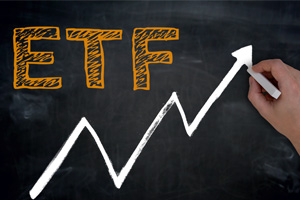ETFs or Exchange-Traded Funds are like a buffet. They have a voracious appetite for diversification and invest in a basket of securities. They are the perfect combination of stocks and mutual funds and offer several types to choose from. Buckle up for a whirlwind tour of the fascinating world of ETFs, where you will learn about how this investment instrument works, the different types of ETFs, and how you can invest in them.
What are ETFs?
ETFs are passively managed investments that track a particular market index. They invest in a basket of securities, such as stocks, bonds, commodities, and others. ETFs are unique as they work like a hybrid of stocks and mutual funds. While they pool your money and invest it in the market like mutual funds, you can buy and sell ETFs like shares on the stock exchange. This fusion offers you liquidity of stocks and a mixed bag of diversified investments like mutual funds
There are several types of ETFs in the market. Find out more about them below.
Types of ETFs
- Equity ETFs
Equity ETFs track equity market indices, such as NSE Nifty50, S&P BSE Sensex, Nifty Bank, Nifty Midcap Quality of Nifty Low Volatility, etc. They provide you with exposure to a diversified portfolio of stocks. Equity ETFs may be sector-focused or market-cap-focused. They can also be categorised into domestic and international funds. Since these ETFs invest in equity and equity-related securities, they carry high risk.
- Debt ETFs
Debt ETFs primarily invest in a diversified portfolio of fixed-income securities, such as bonds and other debt instruments. Debt ETFs generate income through the interest payments received from the underlying bonds and are considered to be relatively less risky.
- ETF FoFs (Fund of Funds)
FoFs are mutual funds that invest in other mutual funds schemes. They do not invest in stocks of different companies but buy units of multiple mutual fund schemes. ETF FoFs are instruments that invest in other ETFs. For instance, an ETF FoF may invest in equity ETFs, debt ETFs, etc. They may also invest in commodity ETFs, like the gold and silver ETF FoF.
- Commodity ETFs
Commodity ETFs invest in a diversified portfolio of commodities, such as precious metals like silver and gold. They give you a chance to invest in precious metals without the hassles of physical storage, security, remaking or reselling charges, etc. Commodity ETFs include gold ETF and silver ETF.
Now that you know about the different types of ETFs in India, you can gear up to invest in them. Let’s find out how you can do this.
How to invest in an ETF?
ETFs are traded like common stocks on stock exchanges. Therefore, you need to open a trading and Demat account with a registered broker. You can then browse through different ETFs, select the one you like, and buy and sell them as you would with stocks.
Investing in an ETF is a relatively simple process, but it is essential to do your research and carefully consider your investment objectives and risk tolerance before making any investment decisions.
To sum it up
ETFs can be great diversification tools. They are highly liquid, offer several types, and are regulated by the Securities and Exchange Board of India (SEBI), which adds a level of transparency. Make sure to browse through the various types and select the right ones based on your goals.
An investor education initiative by Edelweiss Mutual Fund
All Mutual Fund Investors have to go through a one-time KYC process. Investors should deal only with Registered Mutual Fund (RMF). For more info on KYC, RMF and procedure to lodge/redress any complaints, visit - https://www.edelweissmf.com/kyc-norms
MUTUAL FUND INVESTMENTS ARE SUBJECT TO MARKET RISKS. READ ALL SCHEME RELATED DOCUMENTS CAREFULLY
Trending Articles
MUTUAL FUND INVESTMENTS ARE SUBJECT TO MARKET RISKS, READ ALL SCHEME RELATED DOCUMENTS CAREFULLY.




















